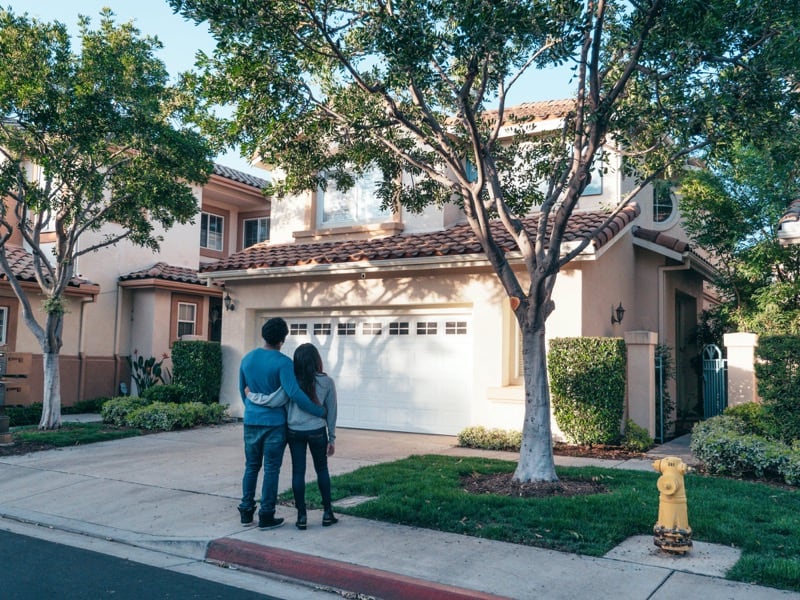Whether you have lived in your home for many years or you’re a first-time homebuyer, it is best to know what your homeowners insurance covers. This will help you secure the coverage you need without having to pay for the coverage you can leave without. In addition, having this knowledge can be an advantage in finding the home insurance coverage that best fits your needs as a homeowner.

What is Homeowners Insurance?
A homeowners insurance, also known as home insurance, is composed of coverages that can help you pay to replace or repay any damages to your home and belongings caused by certain perils such as theft or fire. Moreover, this type of insurance can also help you if you accidentally damaged another individual’s property or if another person, a visitor, got injured at your home.
How Much Does a Homeowners Insurance Cost?
The cost of getting homeowners insurance varies on multiple factors. This includes the coverages you choose, the value of your personal belongings, and the features of your home. In addition, there might be extra costs when it comes to increased coverage limits or if you choose to have additional coverage. An agent can guide you choose the coverage you need and can also help know if you are eligible to get discounts on homeowners insurance.
What Does Homeowners Insurance Cover?
A standard homeowners insurance policy covers 6 types of coverage namely:
Dwelling Coverage
The dwelling coverage protects the structure of your home. This includes the roof, ceiling, walls, windows, and floors. Built-in appliances, like furnaces, can also fall under dwelling coverage. Furthermore, if your home has a porch, deck, or garage attached to it, it will also be included in the dwelling coverage.
In most cases, your dwelling is protected for any cause of damage that isn’t excluded under your homeowners policy. The most common causes of homeowners insurance claims under this coverage include wind, fire, lightning, hail, and freezing.
Other Structures Coverage
Other structures’ coverage is intended for any other structures that are on your property but aren’t attached to our house. This could be a fence, shed, or a garage that is separated from your house.
Just like the dwelling coverage, the damages that may fall under this coverage is anything that isn’t specifically excluded in your homeowners insurance policy. This means that you’d likely have coverage for wind, hail, snow, fire, among others.
Personal Property Coverage
Personal property coverage talks about your personal belongings. This includes your clothes, electric devices, furniture, and other types of appliances that aren’t built-in to your house.
In most cases, homeowners insurance policies cover these items even if they are not inside your house. This means that if someone stole your bike from the park, it’ll likely be covered.
Personal property coverage tends to work differently from dwelling and other structures. The latter can cover any cause of damage that isn’t excluded in the policy. However, under personal property coverage, the homeowner policy covers the disasters that are specified.
These disasters may include the following:
Theft
Damages cause by vehicles
Damage from aircraft
Smoke
Fire or lightning
Explosions
Windstorms or hail
Riots
Vandalism
Falling objects
Volcanic eruptions
Freezing
Weight of snow, ice, and sleet
Damage from a power surge
Bulging, tearing, or cracking of hot water system, air conditioning, steam system, or fire protective system
Loss of Use Coverage
The loss of use coverage is often called “additional living expenses”. This coverage can be useful if you found your home to be too damaged to live in. In relation to this, your home insurance will pay for your hotel expenses, meals, and others that are associated with living someplace else if your home loses its use caused by a disaster your policy covers.
If your home is undergoing some repairs that makes it uninhabitable due to a disaster your homeowners insurance covers, you’ll likely be qualified for a loss of use coverage. However, if the damage your home has is due to a disaster that isn’t covered by your insurance, such as a flood, it is expected that your insurer will not pay for your additional living expenses.
Liability Coverage
This type of coverage can provide you financial assistance if someone sues you for damaging their property or injuring them. This typically extends to anyone in your household, including pets. Hence, if your dog accidentally bites someone from outside a store, you might be covered.
Medical Payments Coverage
Medical payment coverage can provide you financial assistance if you have caused physical injury to an individual outside your household. Unlike liability coverage, there is no lawsuit required. Plus, you don’t need to be found at fault for this coverage to pay out.
Final Thoughts
A homeowners insurance is not a luxury, but a necessity. This type of insurance provides protection to your home and property. Furthermore, a standard homeowners insurance policy covers 6 types of coverage. This includes dwelling, other structures, personal property, loss of use, liability, and lastly, medical payments.
